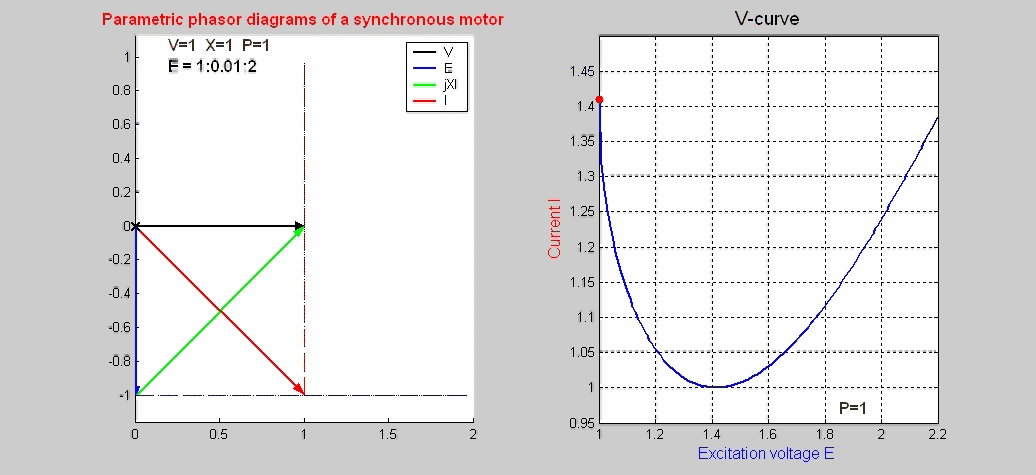SYNCHRONOUS MOTOR (part 1)
The steady-state characteristics of a synchronous motor
represented by phasor diagrams are shown as function
of the excitation voltage E: for low values of E, the motor is said to be under excited and the
current I lags the terminal voltage V where as, for large values of E, the motor becomes over excited with the current
now leading the voltage. Note that the
locus of the current phasor is a vertical line
meaning that I cos(φ) is constant; similarly the locus of E is a horizontal line satisfying the condition that E
sin(δ) is constant; both constraints are the consequence of maintaining
constant power P = I V cos(φ) = E V sin(δ) / X. The basic phasor equation is V = E + jX I. The associated V-curve (I versus E) is also
plotted.
